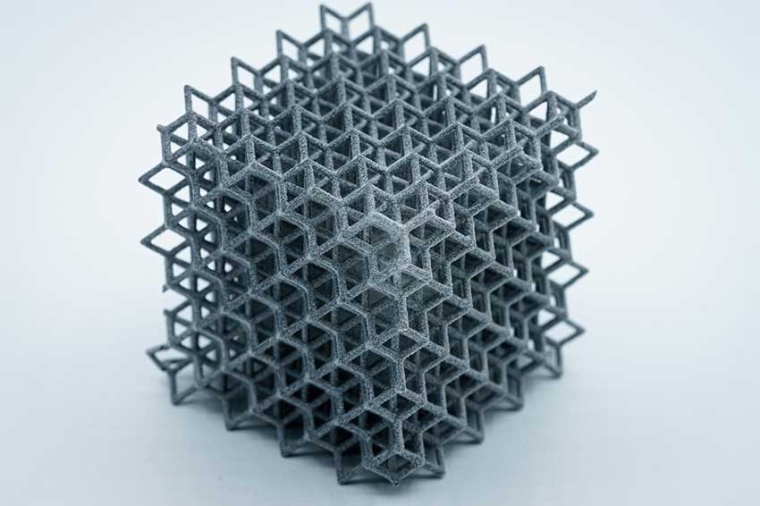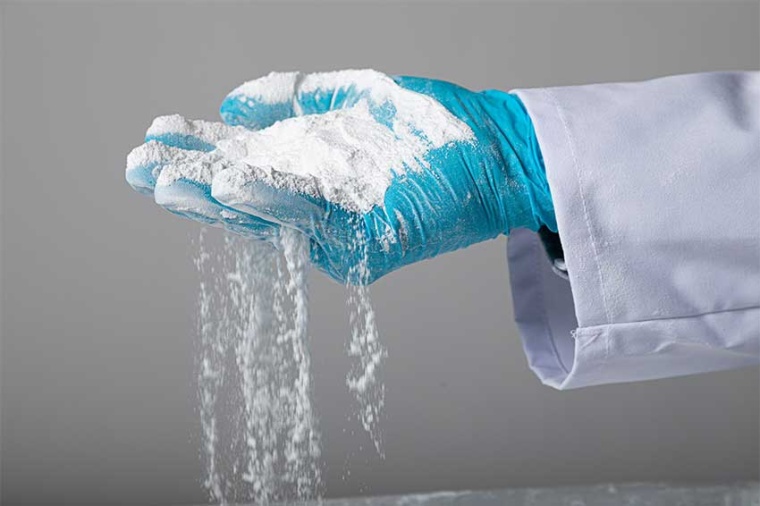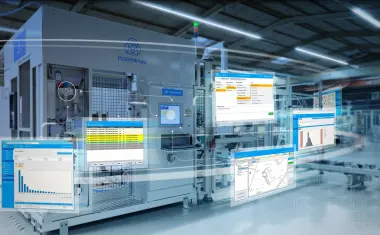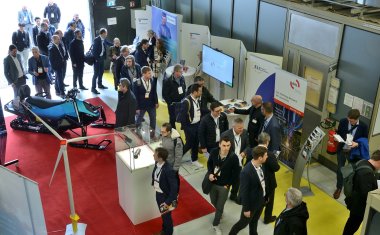Two additive manufacturing processes in comparison
A team from the center for additive manufacturing at Fraunhofer IPA evaluated the technical and economic potential of selective absorption fusion versus selective laser sintering.
The two additive production processes are similar: In selective laser sintering (SLS), a plastic powder, for example polyamide 12 (PA12), is applied to the surface, heated and then selectively solidified with a laser beam. This process is repeated layer by layer.
The selective absorption fusion (SAF) process uses similar plastic powders. However, the process differs from SLS in terms of the solidification mechanism of the powder: After the powder is applied per layer, inkjet print heads in SAF apply an ink that absorbs infrared radiation in specific areas. In these areas, the powder heats up after an infrared emitter passes over it and fuses together.


One possible advantage of this process is the time saved. Instead of deflecting a laser beam in many individual paths per layer, SAF technology requires only a single pass of print heads and infrared lamp. Thus, the build time per layer is not dependent on the components to be printed. However, SLS and SAF have not yet been systematically compared. This benchmark is now being carried out by a research team led by Patrick Springer from the center for additive production at the Fraunhofer Institute for Manufacturing Engineering and Automation IPA. The industrial partner is Götz Maschinenbau, a 3D-printing service provider from Ötigheim, Germany.
The project team now wants to investigate above all the lines of freedom and limitations in the comparison of the processes to each other. To this end, standardized test construction jobs for predefined test scenarios will be printed and evaluated for both processes. The researchers are using PA12, the standard material for 3D printing with plastic powders, as the material. To manufacture the test components, Fraunhofer IPA is one of the first research institutions in Europe to use a Stratasys H350 system, which can process thermoplastic powders from various suppliers.
In order to exploit the full potential of SAF technology, Fraunhofer IPA is also researching automated solutions for powder preparation and feeding. “We support industrial users in the implementation of the technology up to the production of series components. In addition to the application-specific qualification of the process itself, the focus is also on the overall industrial process chain,“ says Springer.
Company
Fraunhofer-Institut für Produktionstechnik und Automatisierung IPANobelstraße 12
70569 Stuttgart
Germany
most read

Qioptiq Photonics becomes Excelitas Germany
The renaming is part of the global consolidation of the Excelitas Group.

Machine Safety 2026: The Five Most Important Trends for Eutomation Engineers
Digitalization and automation continue to drive mechanical engineering forward - and with them, the requirements for functional safety and cyber security are increasing. For automation engineers, this means that machine safety is becoming a holistic concept.

United Robotics Group restructures
The company focuses on the healthcare industry and innovation.

Agile Robots takes over Thyssenkrupp Automation Engineering
This acquisition is intended to strengthen Agile Robots' market position in the field of smart automation solutions

Successful conclusion of the IVSM Fall Meeting 2025 in Haikou, China
The 2025 Autumn International Vision Standards Meeting (IVSM) took place from November 3 to 7 in Haikou, Hainan, and attracted over 120 R&D engineers worldwide.






